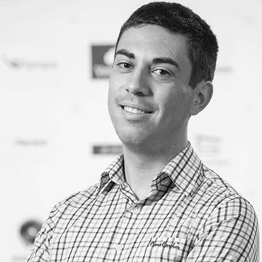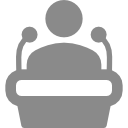
Stefan Ivanov
Senior UX Architect Developer Tools at Infragistics Inc.,
Bulgaria.
Stefan Ivanov
Stefan is a master graduate of RWTH-Aachen, Germany in Media Informatics with specialization in Human-Computer Interaction and UX Design. After graduation he took an interesting career path including the development of interfaces for mobile applications, starting his own company, kicking off a full course in UX Design and for two years now helping define the vision of Infragistics products as Senior UX Architect.

Measuring Usability
3 hrs Workshop | Categeory: UX | Target Audience: UX designers and researchers. UI designers, visual designers, marketing specialists,
business owners.
How to design experiments for prototype evaluation?
UX has taught us a lot. We know how to do user research. We have learned about the
importance of prototyping early in the product development lifecycle. We are also well
aware that prototypes are created in order to receive feedback. Yet this feedback
usually comes in the form of “I like this but we should change that”, “I find this screen
unnecessary”, “Move that button here and make it more saturated and larger”...
Let’s get back to basics! UX is not order taking, right? Neither is it opinion exchanging?
The case behind UX is that it gives us a tangible way to quantify and compare the
experience of a user with a product in order to improve that experience. Thus,
evaluation is a crucial part of the process and we should take a structured approach
towards collecting both qualitative and quantitative data about the prototypes we are
testing.
Three key takeaways
-
How to design formal usability studies?
-
What to measure during usability testing?
-
How to eliminate bias? How to implement remote usability study? - Indigo Studio hands-on.

Design Strategy for Constrained Productivity Tools
30 min Case study | Categeory: UX | Target Audience: Beginner as well as more advanced UX designers and researchers. Also product
owners and other managers on the product team.
In the universe of constrained productivity, a tool serves the role to empower makers
and creators to craft meaningful artifacts for their audience. As designers of these
tools, our ultimate goal is to assure these artifacts will deliver the intended and desired
user experience. Therefore, we have to constrain these makers in a way that does not
stand in their way, but rather, holds their hand on the way to accomplishing one's
intentions.
The customer-centered approach has taught us that every new design project should
start with asking the question who the user is. For constrained productivity tools it is
usually straightforward to identify a primary group of users, but it is equally important to
identify the secondary groups to assure that our work will not be in vain.
In my talk I will share my strategy for identifying such secondary user groups and how
they have impacted my design decisions thereafter. I will walk the audience through
our strategy for prioritizing tasks and features and two strategic approaches for
choosing the best default configurations. Since all of this is impossible without support
of your team, I will also share hints for winning developers on the bright side of UX.
Three key takeaways
-
How to find primary and secondary users of your product.
-
How to prioritize tasks from a UX point of view.
-
How to choose the best defaults. How to convert your team to think and breathe UX.
